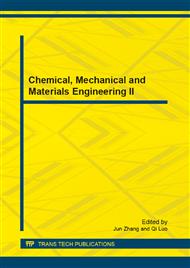p.440
p.444
p.451
p.456
p.462
p.468
p.474
p.479
p.485
Electroosmotic Flow and Heat Transfer in Microchannels: A Closed Form Solution
Abstract:
In this paper, an analysis has been conducted to explore the momentun and thermal transport characterastics of electroosmotic liquid flow in a microchannel under imposed constant wall heat flux boundary condition. The present formulation shows that the problem is governed by three parameters, namely, the length scale ratio (ratio of Debye length to half channel height), the Joule heating parameter (ratio of Joule heating to surface heat flux), and the Brinkman number. A closed form solution of the problem was obtained and the impact of viscous dissipation on the heat transfer behavior was investigated. Analytical exact solutions of dimensionless velocity and temperature profiles, normalized local velocity, volume flow rate, friction coefficient, mean fluid temperature, and the fully-developed Nusselt number were obtained as functions of the governing parameters. Especially, the effects of length scale ratio on major flow parameters (including the normalized local velocity, friction coefficient, and volumetric flow rate) were examined. Also, the viscous dissipation effect on thermal transport characteristics was discussed in depth.
Info:
Periodical:
Pages:
462-467
Citation:
Online since:
May 2013
Authors:
Keywords:
Price:
Сopyright:
© 2013 Trans Tech Publications Ltd. All Rights Reserved
Share:
Citation:


